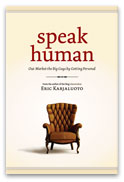
Ends and Odds
Communicating
I’ve always been interested in connecting with people in one way or another, but I think the movie Turk 182! was what hooked me. Timothy Hutton played a guy named Jimmy Lynch. Angry about the city denying his injured brother (a firefighter) benefits, he sets off on a mission to embarrass the mayor by placing the message “Turk 182!” in spots throughout the city.106 Little of this movie remains memorable to me, aside from the notion that a message could provoke controversy and even action.
Shortly thereafter I joined with a friend of mine to craft similar (although largely pointless) messages that we later peppered around our elementary school. Admittedly, it was all rather silly. I believe our tag was “Nerf 482” or something similarly derivative. We scrawled this message on bathroom walls and in cryptic notes—well, as cryptic as they come when you’re twelve years old. Ultimately, we were caught, and the jig was up. For the following day or two we did “hard time,” washing walls around the school.
The whole thing was a clumsy exercise, but I still look back upon it as an important event in my life. While our principal believed us to be bratty vandals, he actually missed the point. (Not that we likely would have articulated it all that well.) We weren’t interested in ruining anything; we just wanted to engage people in a mystery. In our minds, success was getting a few people to wonder what that message meant, and why it kept appearing.
I design things and spend a lot of time writing. I help to develop marketing strategies and have also worked on some interesting self-directed projects. But I often struggle with how to describe what I do for a living. Recently it struck me that the common thread in my work relates to communicating. Whether to share ideas about marketing, ask people to try out one of our networks, or help a group clarify their value proposition and story. It all relates to crafting and spreading messages.
What excites me today is the multitude of ways we can do this. In the past, a limited few had access to publishing media, but the playing field has been fundamentally leveled. This is an unprecedented democratization, and it affords companies like yours the opportunity to outmaneuver those who have traditionally ruled—largely because of their mass. For customers this can mean access to significantly better and more committed businesses that otherwise might have gone unnoticed.
To do this, we need to clearly establish who we are. Then it’s up to us to spread this message effectively using these new channels along with some of the old ones. The new opportunities represent seismic changes, but we can’t expect them to do the work for us. We need to be smarter, more lucid, and better storytellers than our overgrown brethren. In doing so, we can connect with people who may very well help us thrive.
Most will continue to look upon marketing as a prescriptive practice. They’ll lurch about grasping for quick remedies. Such chaotic and disconnected efforts will cycle into an endless parade of false promises, one-offs, and unfulfilled expectations. It’s only by working methodically and seducing customers with unforgettable stories and experiences that we can break free of the violent and exhausting cycles that many of our companies are prone to.
Little of this comes easily but that doesn’t make it any less important. Similarly, little of it is out of reach for anyone compelled to build a great company. An open mind and keen interest in building meaningful connections gets you in the door. From there on, the sky’s the limit.
Worst case: You probably won’t have to wash graffiti off the walls.
Next: Notes



